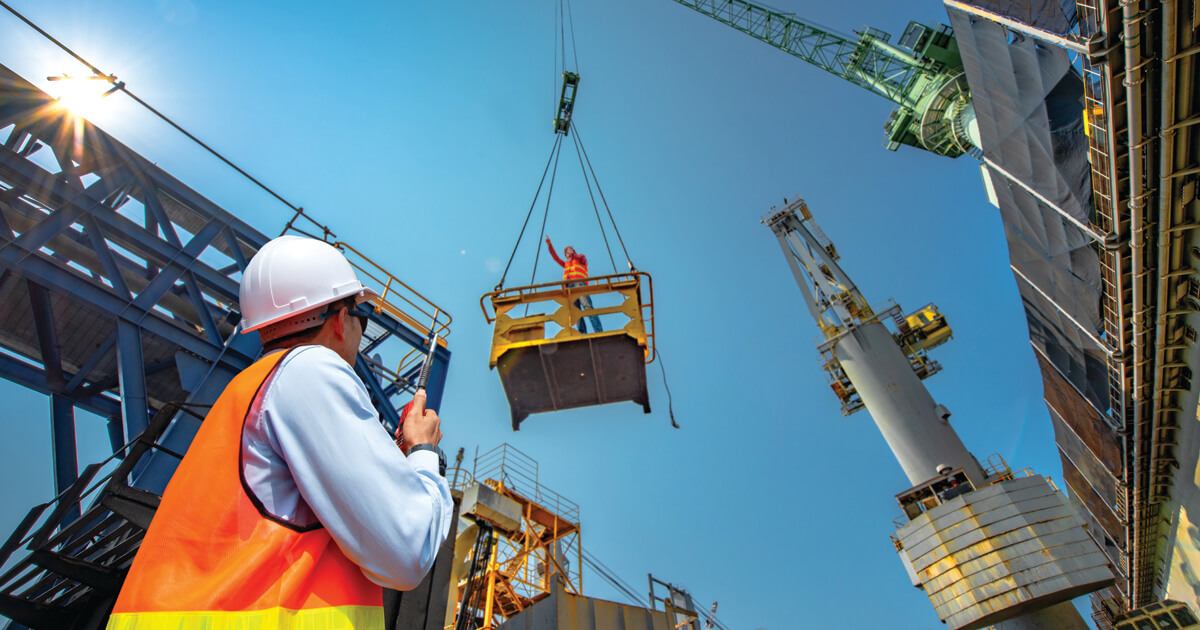Construction workers encounter several significant risks while on the job. However, four particular risks—falls, struck-by hazards, caught-in/caught-between hazards, and electrocutions—are the most common incidents that lead to fatalities. In fact, these risks are referred to as the “focus four” or the “fatal four.” To address these risks, employers must be aware of them and implement policies to ensure a safe workplace.
1. Falls
A fall hazard is any condition that could cause a worker to lose their balance and fall. Generally, in construction, fall protection is required when individuals are working 6 feet or higher above a lower level. On scaffolding, fall protection is required at 10 feet. Fall protection is also mandated above dangerous equipment, regardless of height. It is important to note that even when working at low heights, serious injury or death can occur from falls.
Tips to mitigate fall risks include:
- Wear and utilize fall arrest equipment.
- Install and maintain perimeter protection.
- Cover and secure all floor openings and label floor opening covers.
- Use ladders and scaffolding safely and correctly.
2. Struck-by Hazards
Struck-by hazards exist when a worker can be injured through forcible contact or impact with an object or piece of equipment. Flying, falling, rolling and swinging objects, as well as moving equipment and vehicles, are common sources of struck-by injuries. To reduce these risks, workers should:
- Never position themselves between moving and fixed objects.
- Wear personal protective equipment (PPE), including hard hats and safety glasses, as well as high-visibility clothing so others can see them.
- Stay alert of heavy equipment and remain clear of lifted or suspended loads.
- Implement traffic control plans.
- Ensure tools and equipment are in good working order, adequately tethered, and properly secured and guarded. Restrict access to work areas.
- Ensure equipment has proper mirrors, sightlines and backup alarms.
3. Caught-in/Caught-between Hazards
Caught-in or caught-between injuries happen when a worker is caught, squeezed, crushed, pinched or compressed between two or more objects. Sources of these incidents could include trench collapses, unguarded equipment, and getting pinned between a moving piece of equipment and a wall or other piece of equipment. To help prevent these risks, workers should:
- Never enter an unprotected trench or excavation without an adequate protective system in place. These sites should be protected by sloping, shoring, benching or a trench shield system, and access to them should be limited. A competent person should also perform inspections of trenches and excavations.
- Properly guard equipment, use lockout/tagout best practices, and do not wear loose clothing, long hair or jewelry.
4. Electrocutions
Electrocution injuries occur when a worker is exposed to harmful electrical energy. Common electrical hazards include contact with power lines or electrical parts and use of damaged cords or power tools. These dangers can be remembered through the acronym BE SAFE, which stands for Burns, Electrocution, Shock, Arc flash/blast, Fire and Explosion. To help prevent these injuries, only qualified workers should conduct electrical work, and they should do the following:
- Locate and identify utilities before starting work and look for overhead power lines when using equipment.
- Maintain a safe distance from power lines and know the area’s safe distance requirements.
- Do not operate electric tools unless they have been inspected and are grounded or double insulated. They should also utilize ground-fault circuit interrupters for protection, avoid water and moisture, and follow lockout/tagout best practices.
- Never work with live electricity unless it’s absolutely necessary, and use PPE and proper tools when doing so.
Understanding these four major risks and remaining vigilant on worksites can help reduce on-the-job injuries. Contact the Construction Insurance Experts at Deeley today for more safety tips and risk management guidance today.








